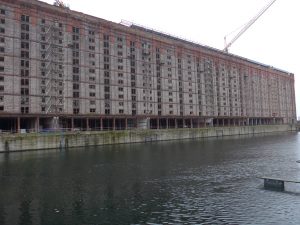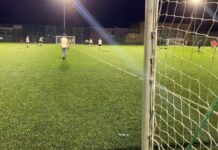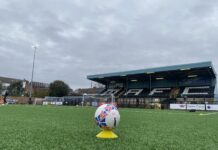Liverpool in the 1980’s was a stark difference from what it is today.
The Tory government had put the city in what’s known as a ‘managed decline’, mirroring a whole host of other cities in Northern England.
With not much else going for them, the people of Liverpool found somewhat of a safe haven in football, with many using it as a way of fighting back and rebelling against those at the top.
Seemingly overnight, the docks and it’s respective jobs had vanished. The post-war boom that had served the country so generously in the years prior, had also long disappeared and was a sorry symbol of what life in the city was like. In some areas of the city, unemployment levels were at 90%, and unlike other areas of the country Liverpool had nothing else to rely on in terms of employment or income.
The complete loss of jobs embodied the appalling economic state of the city, broken windows and empty buildings epitomized the decay and malaise that had just been allowed to fester in the city. Alongside this – away from the docks – around 1 in 4 people were living below the poverty line, a sorry representation of how the government had treated both the people and the city of Liverpool.

The ‘managed decline’ that had been so ferociously enforced by the Tories, was now clear to see, and for many in the city it seemed like there was no escape. Until football became involved that is.
……
Prior to the 1980’s, Liverpool had won a total of 13 major trophies, over a ten-year period, which also included three European Cups.
In contrast, Everton were somewhat inferior to their cross-city rivals; winless in 14 games between the two. In serious need of making up the ground lost over this ten-year period, Everton were presented a chance in the form of a League Cup quarter-final. In the midst of their worst league season to date, a beleaguered Everton side faced Oxford and in narrowly winning the tie 1-0 kicked off their revival. The league form soon picked up, as did the cup run, and the 84’ season culminated in what was occurring back home.
With the stadium full to the brim with scousers, the statement was bigger than the game itself; chants of “Merseyside, Merseyside” rung round the stadium, and the togetherness of the two sides – despite their rivalry – was clear to see. In essence, the match was a signal to the rest of the country, and especially the government, that it would take a whole lot more than ‘managed decline’ to defeat the city of Liverpool.

After winning their first piece for silverware in fourteen years, beating Watford 2-0 to win the FA Cup, Everton followed it the following year with the Division one title, their first since 1970.
With the title floating around Merseyside, along with Liverpool’s European dominance, the people of the city finally had something to feel proud about. The success of the two teams ultimately saved a lot of families from encountering serious problems. It was what protected the mental and physical wellbeing of so many people across Merseyside, effectively giving many something to look forward to at the end of the week.
Aside from the football, the mood by the mid-80’s in the city, had lifted. The council had since declared war on the government and began to create jobs with a new [illegal] budget. The arts in the city also had improved, television shows now depicting what life was actually like and educating audiences all across the country.
In the years that followed, the dominance of the two Merseyside teams showed no signs of stopping, and culminated in a title race between the two in the 1985-86 season.
Liverpool eventually won the title by a narrow margin, and followed it up with a victory over – yeah, you guessed it – Everton in the FA Cup final. Becoming only the third team that century to do the domestic double.
The league remained in Merseyside for the next two seasons, further outlining the dominance of the two teams and staking their claim as the best two in the country.
1989 however was an awful time for the city.
The Hillsborough tragedy took place in the summer of 1989 and forced the two clubs of the city to come together. With the demonisation of the fans from both the country’s media and government, the tragedy actually brought the city much closer together. The final that year again featured the two Merseyside teams, and served as a source of both immense pride and defiance for the people of the city.

Featured image: “Anflield and Goodison Park” by tearbringer is licensed under CC BY-NC 2.0














